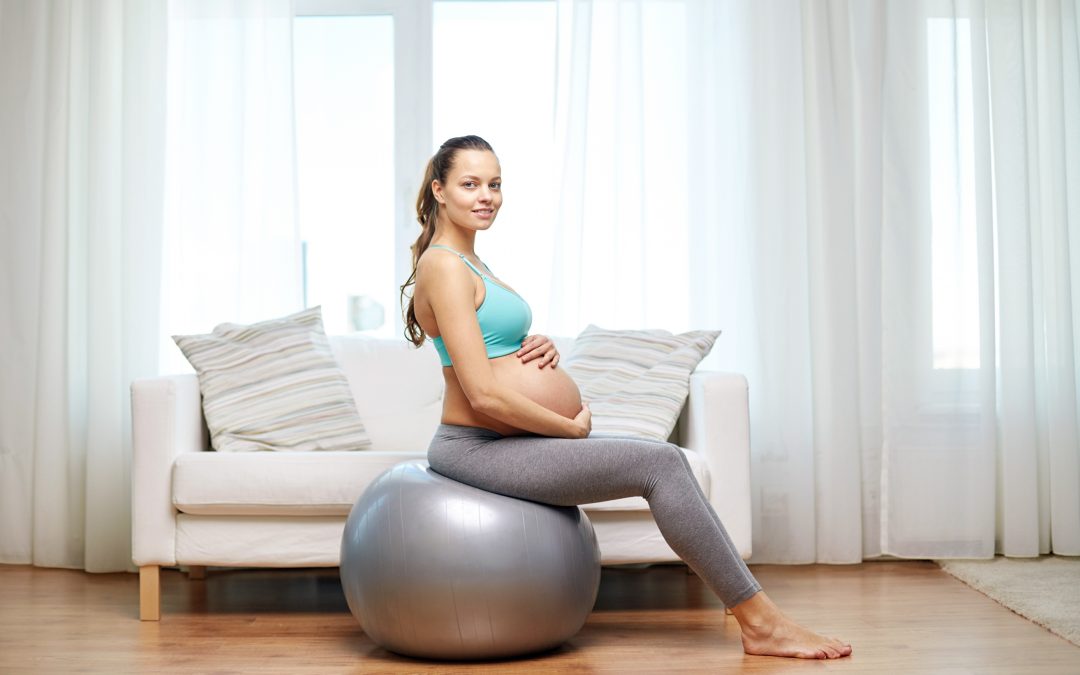
Using a Birthing Ball For Pregnancy, Birth, and Beyond
What is a Birthing Ball?
Birthing Ball. Pregnancy Ball. Yoga Ball. They are all just an ordinary exercise ball repurposed for birthing. We simply switched the name when we use it in preparation for, and during labor.
While most hospitals provide balls for use during labor, many moms prefer to bring their own from home. Having a birthing ball to use at home has its own advantages, too.
How Can I Use A Birthing Ball at Home During My Pregnancy?
Using a birthing ball as a chair instead of sitting on the sofa or chair can offer much more comfort, especially during the later weeks of pregnancy. Even early on they can help to minimize aches in your spine, hips, and lower back. It also can help you resist the urge to slump as it promotes good posture.
Sitting on a large, round, soft, ball gives your core a mini workout as you balance or rock on it gently. Also, sitting on a birthing ball is that it helps to open up your hips making room for the baby to descend into the pelvis. It can even help with breathing during the third trimester. These gently rocking movements also promote blood flow to the placenta.
Most importantly, using a birthing ball during pregnancy can help get the baby in the correct position for birth.
When Should I Start Using a Birthing Ball?
This is a great question, and it speaks to the excitement and desire to do what is best to ready the body for an easy pregnancy and delivery. Most women start using their ball around 32 weeks. This is often a time during pregnancy when women start to notice more of the effects of carrying a baby. However, if you are having back discomfort or strained breathing, you might want to try sitting on a birthing ball earlier. Remember that sitting on the ball helps build core strength as your belly grows bigger, so there’s never a “too early” time.
What Size Birthing Ball Should I Use?
Having proper sizing is important not only for safety reasons but also for comfort. A birthing ball too big or a birthing ball too small can be uncomfortable and unstable. The general guidelines are:
55 cm – shorter women – (up to 5”4’)
65 cm – medium-sized women (5’5” – 5’9”)
75 cm – tall women (6’ and taller)
Check to make sure the ball is the right fit for you when it is inflated to a comfortable fullness. Your legs should be able to at a 90-degree angle with your flat on the floor. If your knees are high and your hips are dipping below the knee line, it may cause a strain on your hips.
What Should I Know Before Purchasing a Birthing Ball?
Besides the fact that birthing balls are the same as exercise balls, you want to make sure you are getting a ball made with anti-burst materials.
In classes, I use and recommend the URBNFit Exercise Ball
I can vouch that it has held up well with lots of use – including inflating and deflating for travel and height and comfort adjustments. It comes with a quick inflation pump which works well if you don’t have a tire pump. The other nice thing about this ball is its multiple color choice. They have held up well with many sized moms and dads using them as classroom chairs as well as for practicing the labor positions we teach.
It’s always a good idea to check with your midwife or provider before using a birthing ball. They know the particulars about your pregnancy and can best direct you how you might use it to address special circumstances, if any, you may be experiencing.
Recent Comments